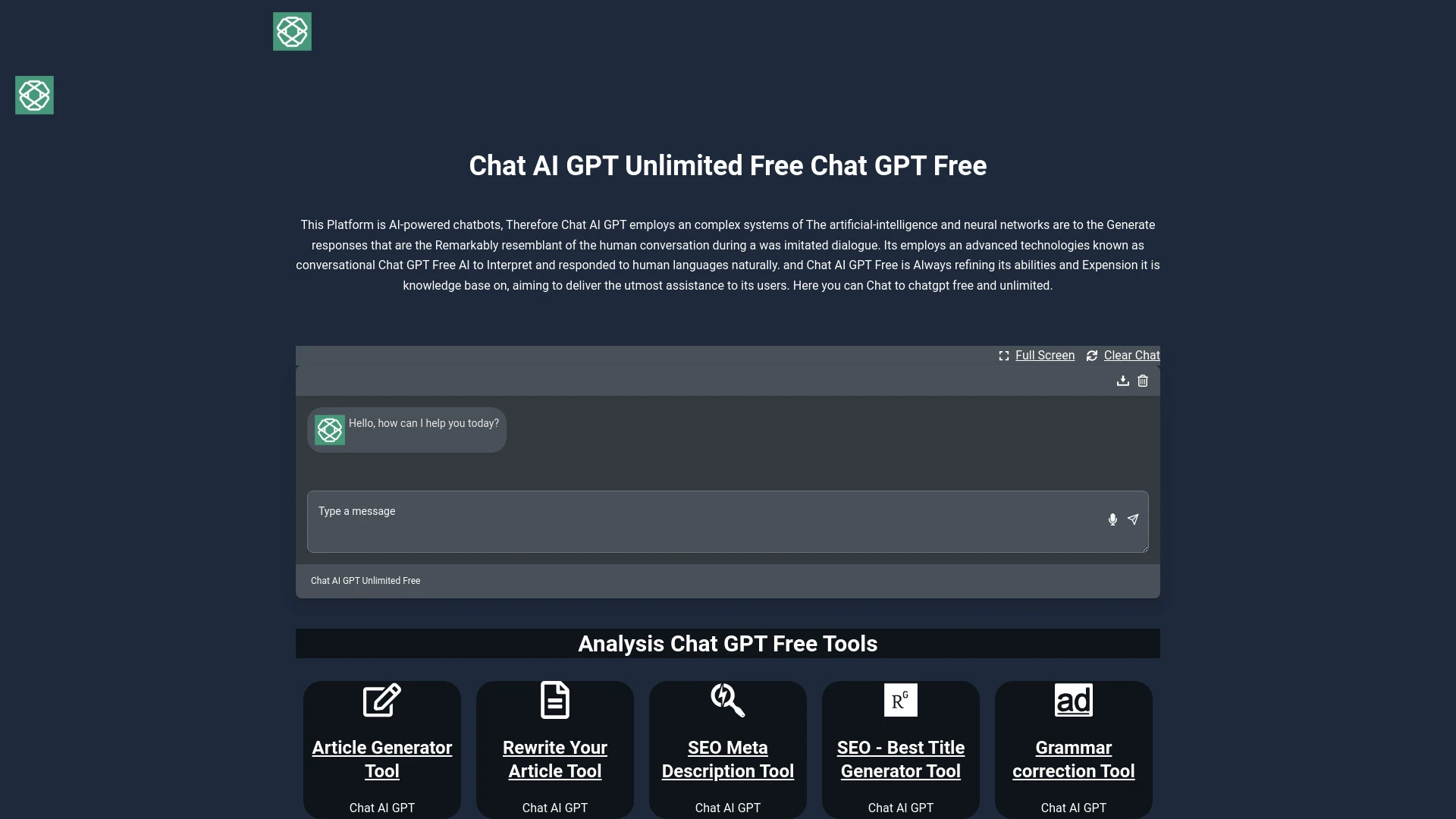ChatGPT versus Chat AI GPT
ChatGPT and Chat AI GPT both utilize advanced natural language processing but cater to different audiences. ChatGPT, launched by OpenAI in November 2022, targets general users for tasks like conversation and content creation. Chat AI GPT, built by various developers, often focuses on niche applications. Both reflect the growing innovation in AI since early 2020s advancements.


ChatGPT
Ideal For
Drafting professional emails
Brainstorming event ideas
Helping with online selling assistance
Managing team-building activities
Key Strengths
Provides quick and responsive interaction
Enhances productivity through automation
Suitable for a variety of tasks
Core Features
Engaging communication
Insightful and context-aware responses
Task automation for various needs
Easy interface for user interaction
Versatile applications across personal and professional tasks
Chat AI GPT
Ideal For
Customer service support
Educational program enhancement
Creative writing assistance
Interactive engagement for content generation
Key Strengths
No sign-up required
Unlimited conversations available
Accessible on multiple devices
Core Features
Unlimited free chat
Multilingual support
Interactive conversational AI
Variety of AI tools for content creation
Quick response time
Popularity
At a Glance
ChatGPT excels in conversational fluency and context retention, making it ideal for customer support and interactive applications. Chat AI GPT, while also proficient, often performs better in structured data tasks due to its focus on accuracy. Pros for ChatGPT include natural dialogue; cons might involve occasional inaccuracies. Chat AI GPT’s pros are precision, but it can lack fluidity. For interactive tasks, choose ChatGPT; for data-centric tasks, opt for Chat AI GPT.
Pricing and Subscription Plans
ChatGPT offers a subscription plan at $20/month for advanced features and prioritization. In contrast, Chat AI GPT may have multiple pricing tiers, often starting from free basic access to more comprehensive plans at varying costs. Additional fees depend on usage levels, potentially benefiting larger businesses with scalable options. ChatGPT is generally more cost-effective for small to mid-sized enterprises, while Chat AI GPT suits diverse business sizes with flexible pricing models.
Performance Metrics
ChatGPT generally excels in conversational fluency, yielding faster response times. However, Chat AI GPT often achieves higher accuracy with complex data tasks. Reliability varies by task; ChatGPT is better for casual dialogue, while Chat AI GPT shines in structured analysis. Context specificity can dictate which model outperforms in certain scenarios.
User Experience
ChatGPT offers a clean, intuitive interface that's easy to navigate, making it accessible for beginners. Its customizability is limited, focusing on straightforward interactions. In contrast, Chat AI GPT might provide more advanced features but can have a steeper learning curve. User support resources for ChatGPT are robust, while Chat AI GPT may vary. Overall, ChatGPT excels in simplicity and user support, enhancing the overall user experience significantly.
Integrations and Compatibility
ChatGPT offers seamless integrations with apps like Slack, Microsoft Teams, and Zapier, enhancing workflows. Chat AI GPT, while offering API access for custom integrations, may have fewer out-of-the-box solutions, focusing on versatile system compatibility.
Limitations and Drawbacks
ChatGPT and Chat AI GPT share limitations like generating inaccurate information, difficulty with nuanced queries, and reliance on training data. Both can struggle with context retention. Workarounds include cross-referencing information and using clear, specific prompts.